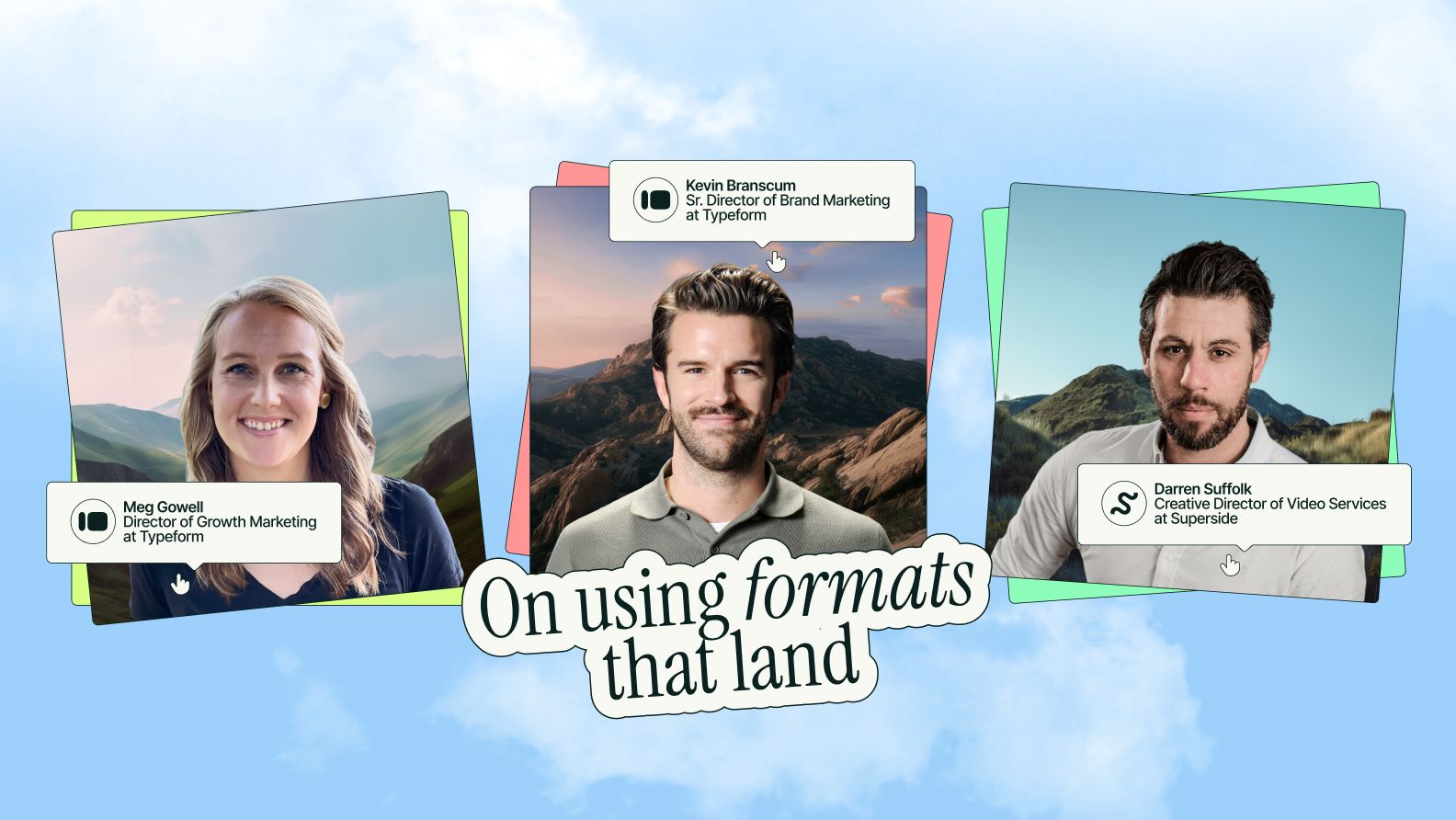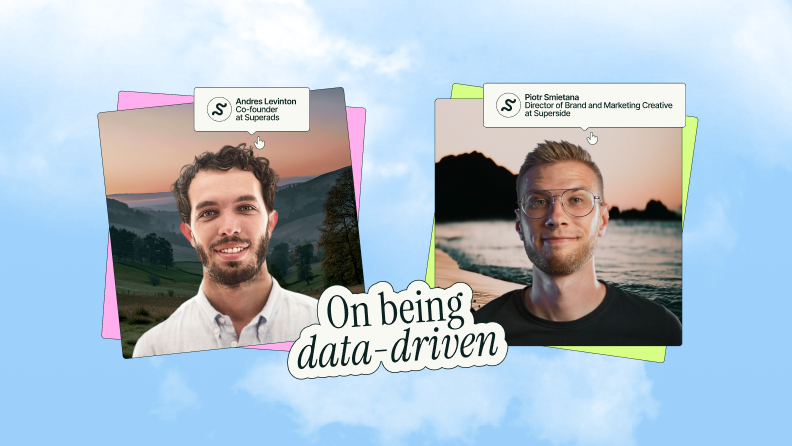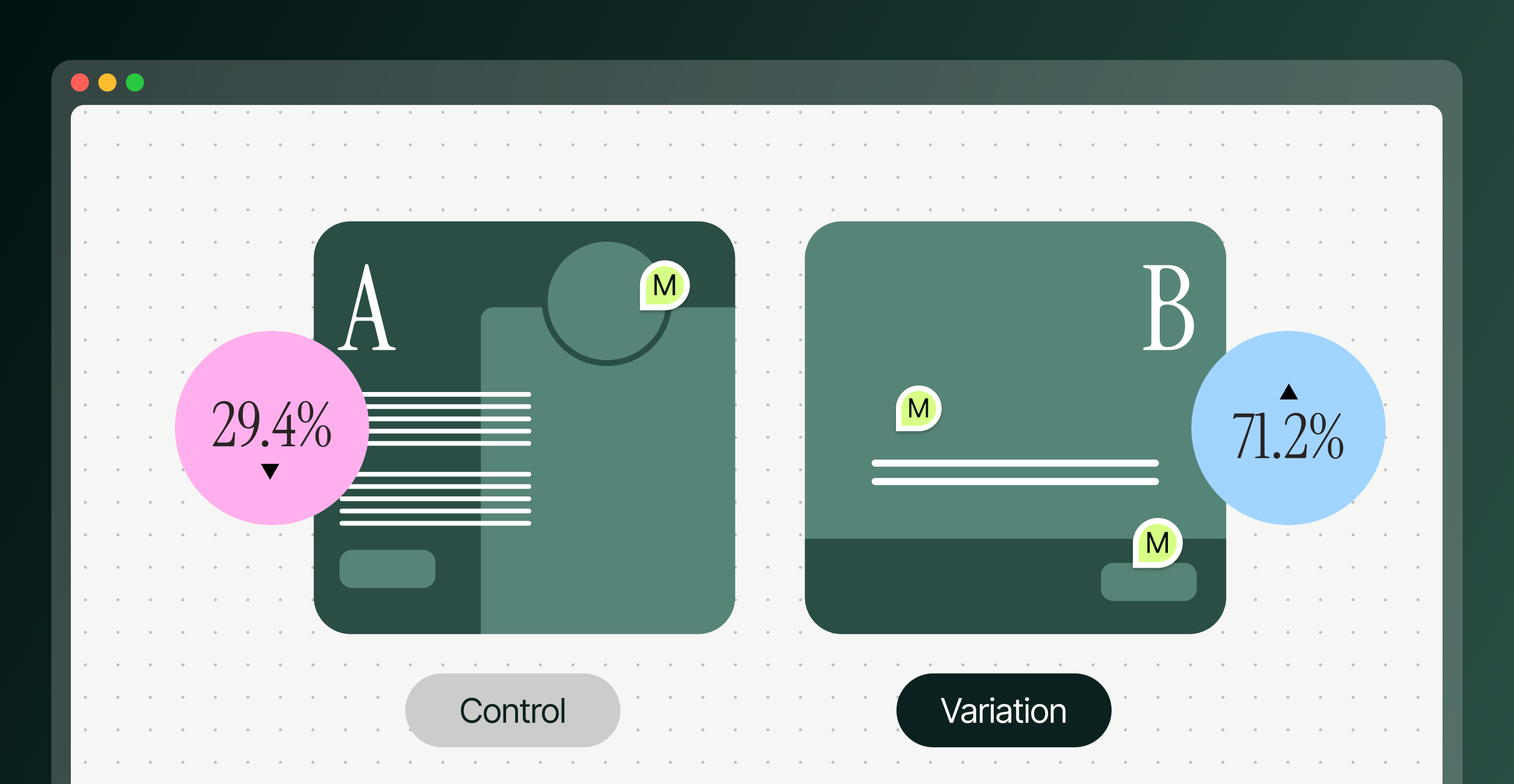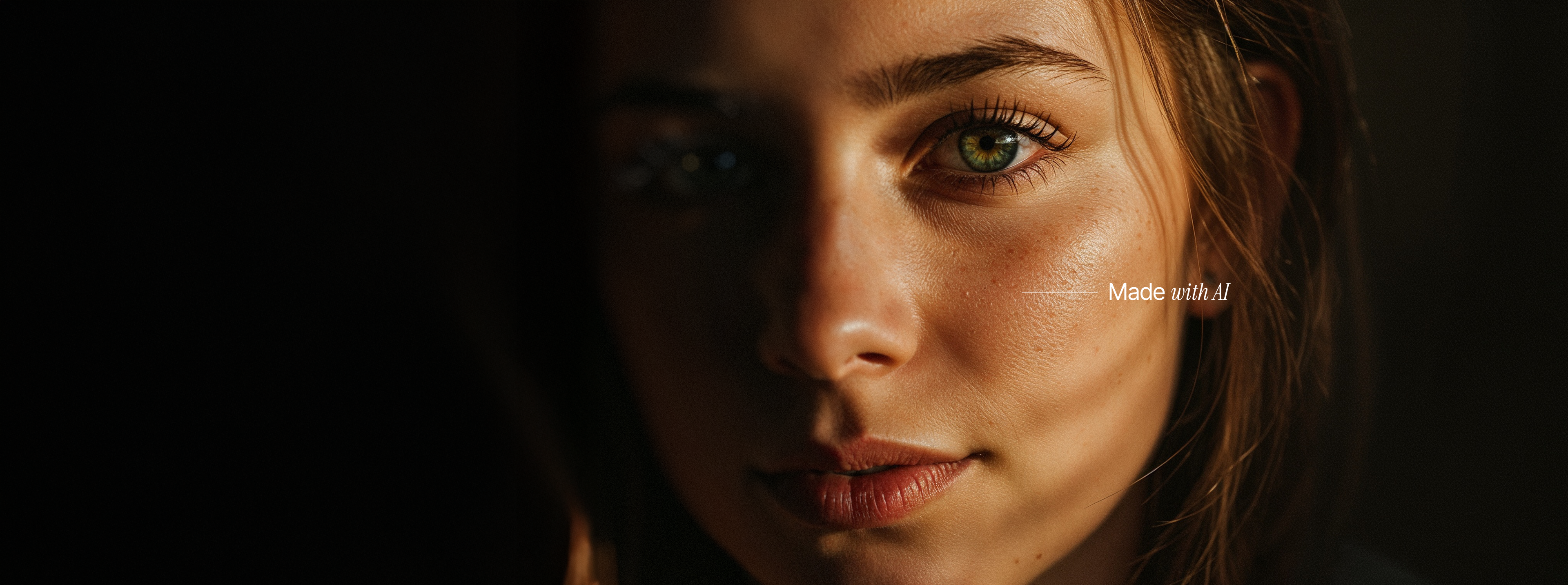Formats that land: Inside a growth and brand team's recipe for results

Great creative isn’t just what you say—it’s how you say it. Dig into the formats that land, the stories that resonate and the partnerships that make it all possible at Typeform and Superside.
There’s no singular formula for breakthrough creative.
But if there’s a throughline, it’s this: The formats you choose matter as much as the message you’re trying to send. In an era where attention is currency, getting the right mix of video, visuals and content isn’t just a nice-to-have—it’s a growth imperative.
To unpack what that mix looks like, we talked to Meg Gowell and Kevin Branscum, from Typeform’s growth and brand teams, and Darren Suffolk, from Superside’s video team for our latest guide: Inside Great Creative Partnerships. Bringing together both the creative and marketing perspectives, they shared:
- What success looks like across teams
- Why video (still) wins
- How alignment leads to success
- How to get scrappy and make the most of every initiative
- Why it all comes back to collaboration
What emerged is a blueprint for value-first thinking that delivers results and drives conversations.
From metrics to momentum: Defining success
What success looks like means different things for different people. Ultimately, it’s about impact.
From the marketing side, that often means metrics. “For me, it’s a mix of on-platform metrics—click-through rate, impressions, signups, form fills. And then slightly downstream, it’s about business impact: Are we seeing a lift in paid accounts or pipeline?” said Gowell. “But also, did we make a shift big enough to teach us something? Whether or not it won, did it disrupt the norm?”
Branscum agreed, adding that success isn’t just performance—it’s resonance.
We define success as getting the anecdotal reaction, engagement and response from people that look like our core audience. Are people sharing it? Are they recapping it in their own campaign reviews? That kind of brand affinity is just as important as conversions.

From a creative point of view, Suffolk brings it back to business impact. “Actual performance and results show you’ve done something worthwhile. Writing what you did is far less compelling than writing what it achieved,” he shared. “That’s always the lens we use at Superside: Did this move the needle for the customer?”
Format is strategy: Why video (still) wins
For all three leaders, video is a critical tool for standing out.
“We’re living in the democratization of constant access to video,” said Suffolk. “It’s no longer true that short attention spans kill long-form. People will give you their time—on the bus, at lunch, between meetings—if what you’re showing is actually worth it. And if it moves, it grabs attention.”
For Gowell and Branscum, it’s all about the funnel stage and where customers are. “You have to keep your finger on the pulse of how people are consuming,” Branscum added. “Some formats work better at the top of the funnel for emotional impact—like video—and others are great for more technical content. It’s about matching the medium to the moment.”
Diversify formats to be able to reach people in the way they're consuming information. That can vary from person to person and by funnel stage. From a creative standpoint, we're always wanting to explore those different formats, but we also want to make sure we're not just creating something that's going to collect dust, but that people on our team are excited to use and explore.

Closing the gaps between teams
One of the biggest blockers to format innovation? A broken feedback loop.
“There’s always a gap between the paid team and the creative team,” admitted Gowell. “It’s hard to aggregate ad performance across platforms. There’s no dashboard. It’s manual. So creatives are kind of blind unless you make a real effort to connect the dots.”
According to Suffolk, making that effort and creating alignment is essential to breaking through the noise. “We’re lucky to have strategists who work to fuel the creative journey, not control it. That’s how we prioritize: Ideas supported by data, but with space to be bold,” he said.
If you copy what’s flooding channels, you’ll blend into the AI noise. Be different. Try something fresh and creatively, instinctively led. Try to find that thing that's still going to resonate but isn't going to be the same as all the other stuff out there.

Making the most of every initiative
Given modern day resource limitations and lean teams, marketers and creatives are learning to align, repurpose and make the most of every initiative.
“At Typeform, creative capacity is often our biggest bottleneck,” said Gowell. “In this ‘do more with less’ era, we look at every initiative and ask: Is this something that I will be able to reuse or is this an isolated moment that I'm not going to be able to use again? Is this campaign something that will live on in some sense?”
A great example: Typeform’s “Get Real” campaign. With a limited budget for ad spend, the team got scrappy. For the first part of the campaign, they created a video-based survey and contracted 37 influencers to take it using Typeform, where they shared their hot takes about influencer marketing.
Afterwards, they shared those video responses with their followers, resulting in 1,300 people responding to the survey. To wrap it all up, Typeform recently launched a report with the findings.
That report is going to feed a bunch of zero-click ads. And so it’s creating this more sustainable ecosystem with what we do. I would consider it creative because we had to kill a lot of birds with one stone with that campaign.

For Suffolk, it’s all about creating long-term value, not just quick conversions. This means going a step beyond just creating content to sell and understanding what consumers can get out of each creative interaction.
With whatever video or content you create, there always needs to be a value exchange with the viewer. They’re giving you their time by watching. What are you giving them in return? If the only thing you're giving them in return is ‘buy our thing,’ that's a bad value exchange. If there’s genuine entertainment, information or insight to be taken, that's a good value exchange.

The value doesn't have to be information—it's about the brand interaction having some kind of lasting impact for a viewer, rather than just being a request from the brand.
The creative-marketer partnership: What makes it work?
But what actually drives breakthrough work? Along with the right formats and real value, collaboration plays a key role.
“It can’t be an assembly line,” said Branscum. “You have to bake in collaboration—brainstorms, thought starters—before you jump to production. That’s where the best ideas come from.”
For Gowell, the vision is even bolder: “The dream is to get to a point where the creative team can ship things to the channel owners—not the other way around. That’s where the magic happens.”
Suffolk summed it up: “It’s this whole idea that it’s a partnership, right? Taking that creative journey and recognizing that the collaboration with a marketer helps keep you focused on the purpose of the work.”
Format isn’t fluff—it’s a growth lever
Breakthrough creative doesn’t happen by chance. It’s the result of intentional choices—about message, medium and the people behind them. As this conversation shows, the format is never just a finishing touch. It’s a strategic decision that determines whether your content resonates, gets reused and drives results.
From aligning on metrics to closing feedback loops and building partnerships between marketers and creatives, the most effective teams treat format as part of the core strategy—not an afterthought.
For more insights from effective marketing and design teams, check out our full guide, Inside Great Creative Partnerships.
Tess is a Senior Content Specialist at Superside, where she crafts compelling content for SMBs and enterprise businesses. With over 10 years of experience, Tess has honed her skills writing for both B2B and B2C audiences, working across agencies and in-house creative teams. Her expertise spans industries, including international relations, tech, hospitality, and the music industry, where she has a knack for blending storytelling with strategic insights. When she’s not busy writing, you’ll likely find her curled up with a good book, binge-watching the latest Netflix obsession or hiking.
You may also like these

More than a feeling: Inside a marketing-creative duo's data-driven mindset
Great campaigns don’t just look good—they perform. But getting creative to yield real business results requires more than just good instincts or a clever tagline.In today’s landscape, where every impression counts and attention is scarce, you need strategy. You need insight. And most importantly, you need alignment between the creative and the data.In other words, being data-driven is essential. For Andres Levinton, Co-founder at Superads, and Piotr Smietana, Director of Brand and Marketing Creative at Superside, this doesn’t mean choosing data over creativity—it means using both, intentionally. Levinton and Smietana dug into what that looks like in our latest guide, Inside Great Creative Partnerships, including: Why dashboards aren't everything
10 digital design agencies that deliver enterprise-ready work
We live in a digital-first world where exceptional digital design is pivotal to marketing success. Design shapes how people connect with your brand. Every screen, scroll and click is a growth opportunity.In 2025, the global graphic design services market is valued at USD 55.1 billion and is projected to reach USD 81.3 billion by 2030. The digital design segment, which includes everything from web and app to landing page and social design, is rapidly expanding as our reliance on digital platforms and mobile devices intensifies.This growth highlights the demand for persuasive digital design. It also reveals the extent of noise and fragmentation in the online marketing space. It’s no wonder brands struggle to keep pace and stand out.Do you already juggle too much? A trusted digital marketing partner can take the creative load off your plate.The dilemma is not so much whether to enlist the help of enterprise design services, but which agency or service provider to hire. In this article, we shortlist 10 top digital design agencies and delve into the key criteria that make them an ideal fit for enterprise brands, with insights from our very own Helene Botha, Group Creative Director at Superside.
8 B2B creative campaigns that broke the mold (with real results)
What’s your biggest challenge in creative B2B marketing? If you answer “keeping up with our competitors,” you’re already off track. A quick scroll through LinkedIn reveals why looking at what others do is a risky strategy: You’ll see generic visuals, dull headlines and the same generic “download our whitepaper” blurbs.The reality is that the bar B2B brands have to clear today is entirely different from what it was a few years ago. Copying what others do won’t win you business.Today’s B2B buyers respond best to extraordinary creative and fresh tactics. In fact, LinkedIn’s own 2025 B2B Marketing Benchmark report emphasizes that B2B brands should focus on new creative strategies.Creativity shouldn’t be something you rush or relegate to the unpaid intern. It should be a team priority, because superb B2B marketing campaign creative can drive sales and real business growth.Keen to produce standout digital design, a strong web presence, enjoyable B2B videos and more? In this guide, we outline what modern business-to-business creativity looks like, with insights from our very own Damilka Rojas, Senior Creative at Superside.










